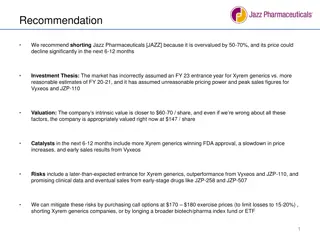The Impact of Mental Health on Jazz Legend Thelonious Monk
Thelonious Monk, a jazz icon, faced struggles with mental health, including an involuntary hospitalization and a misdiagnosis of paranoid schizophrenia. Later diagnosed with bipolar disorder, his symptoms affected his music career and personal life, highlighting the intersection of creativity and mental illness in the jazz world.
Download Presentation

Please find below an Image/Link to download the presentation.
The content on the website is provided AS IS for your information and personal use only. It may not be sold, licensed, or shared on other websites without obtaining consent from the author. Download presentation by click this link. If you encounter any issues during the download, it is possible that the publisher has removed the file from their server.
E N D
Presentation Transcript
BLUE MONK: MENTAL HEALTH, SUBSTANCE ABUSE, AND THE JAZZ PRESS 1945-1959
Monk was first hospitalized in 1957 at Bellevue in NYC. It was an involuntary admission He was considered a danger to himself and others so was held for observation It felt like a prison to Monk Conditions were overcrowded: 650 patients were jammed into the 630-bed facility After three weeks, a physician who was a family friend successfully negotiated Monk s release He was released without a diagnosis He was fortunate to have escaped being misdiagnosed as a paranoid schizophrenic as were some of fellow jazz musicians Including Charles Mingus and Bud Powell. Paranoid schizophrenic was a label often applied to black patients and nonconformist artists.
DIAGNOSIS Nearly twenty years later, Monk was accurately diagnosed with bipolar disorder. His depressive symptoms included: Falling asleep at the piano Staring into space, lost in thought, seemingly unable to recognize people around him Not leaving his home for weeks at a time His symptoms of hypomania included: Staying awake for 2-3 days at a time Frenetic pacing Going without eating so as not to interrupt other activities
MAD MONK: REPRESENTING MENTAL ILLNESS IN THE JAZZ PRESS Many friends, colleagues, and journalists interpreted Monk s symptoms as his trademark eccentricities. Although some speculated that his madness was intrinsic to his creative genius, his bipolar disorder interfered with Monk s ability to create and retain jobs. It also negatively impacted his family.

























